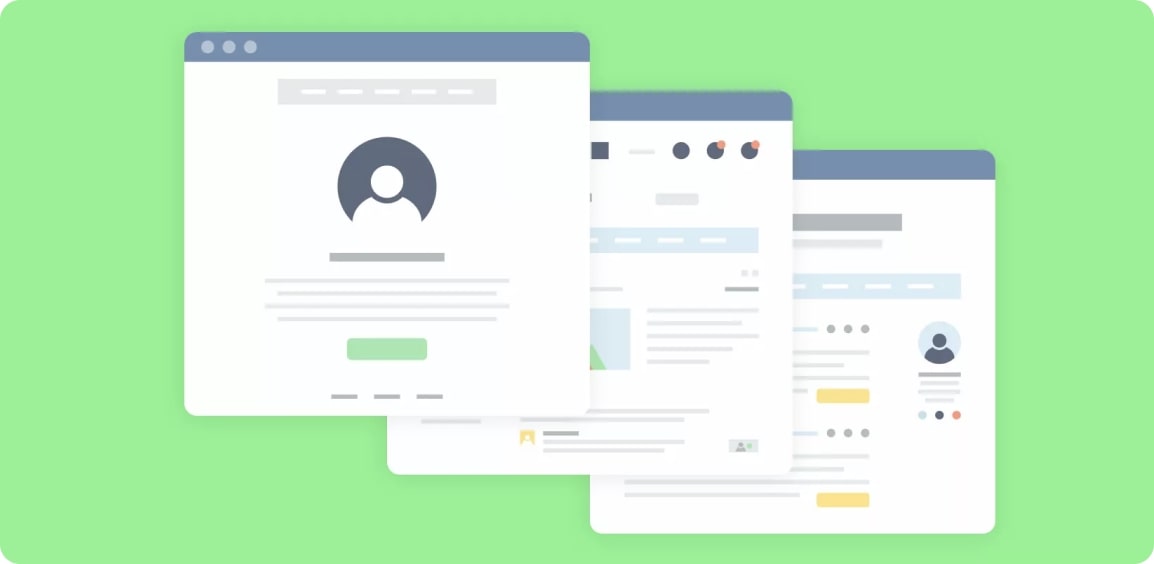Why Is Prototyping Important?

Why do we need to create a website prototype if we have already created a detailed technical overview of the future product? We are pretty sure you have heard such things from your clients or colleagues at least once. Businesses think about saving money on web development, which is why they often skip the prototype stage. In fact, this is the most common mistake.
Amoniac OÜ has an extensive portfolio in web development, and we can assure you that prototypes are essential for effective product building. In this article, we will share our experience in creating prototypes for websites, software, or apps and explain how it can help you decrease the final product cost and save time.

What Is The Prototype?
Before we jump into a discussion of the prototype benefits, let's define what we call the prototype.
The prototype is a mock-up or demo version of what the website will look like at the final stage. It will help you to fix most issues initially, test usability, and make some functional changes before software development.
Let's look at the different types of prototypes:
- Low-fidelity prototype. In most cases, it is elementary planning of the website. It can be done even on paper. The aim is to define the structure, the disposition of elements, and possible features the client wants. It is a scheme of a future product.
- High-fidelity prototype. This is a more realistic prototype of your website, where you can click the links and understand the flow. Such a prototype is very close to the final version, has actual texts and images, all details are already defined and can be tested. Here you can predict how long it will take to get a website. But this is still not the final design of your product.
The next stage in prototyping is a final product design. This is an interactive product that looks exactly like a final website in most cases. Prototypes also can be static, only images and block schemes. But it is usually only in the early stages of development. The high-fidelity prototype is already made in HTML format.

Why Do You Need To Create Prototype First?
It can be a myth that a prototype is expensive, not practical, and insufficient for future product or software development. In the next paragraph, we will try to break down this myth. Building a prototype first can bring many benefits for your business, and here is why.
- Improve the design of your project. You can update the design of the future project, change colors, textures, or fix some usability issues. It is cheaper to do it on the prototype stage than to fix some structure or other matters in the final design stage.
- Evaluate the quality of the product. You can test the product's workflow and its quality in the early stage. Maybe you will find some gaps or bugs you can fix. In some cases, you will find that some features are unnecessary for your product.
- Predict the final development cost. Prototyping is a great way to get the most accurate price of development. All the features have already been tested. It means that you can predict the time of the final product rollout and its cost.
- Improve product integrity. Ensure that you will not have integrity problems after the product launch. At this stage, you can test how your product will work with other platforms and tools the business already uses.
- Modify your tools. The prototype stage will help you understand the efficiency of your tools for this project. You will save time and money if you update and modify tools in the early stage.

Prototyping makes communication between clients and developers more effective and optimizes the time for product delivery. Creating a prototype also makes a developer's work more efficient. Mainly because it makes it possible to fix all fundamental mistakes initially.
What To Consider Before Developing Prototype
To have a quality prototype and reduce development time, you need to ensure a few critical steps:
- Make efficient user research. Ensure that you understand users' needs, pains, and expectations. Prototyping is not a solo work. It is a part of communication with users. Try to complete valuable research before you start working on a prototype.
- Collect all feature and tech requirements for the product. Be sure that you know how each feature will help achieve business goals or improve business processes. There is always a list of must-have features for different types of products. For example, it can be a search bar, contact forms, authorization form, social media integration buttons. But each product or website can have some specific requirements.
- Create the architecture of the future product. You will work with architecture on the first stage of prototyping. But it is always better to understand how you will structure everything before drawing the blocks. You can use a mind map to ensure the flow logic in your website.

Final Thoughts
As you can see, the prototype stage will not make your product more expensive. A good prototype will decrease the development time and save your money on adding or deleting features in the future. The prototype also makes backend and frontend developers start working with a website faster. Moreover, if you fix all critical mistakes early, you will save you money and time in the future. If you need to discuss your case more in-depth, you can contact Amoniac OÜ specialists.



